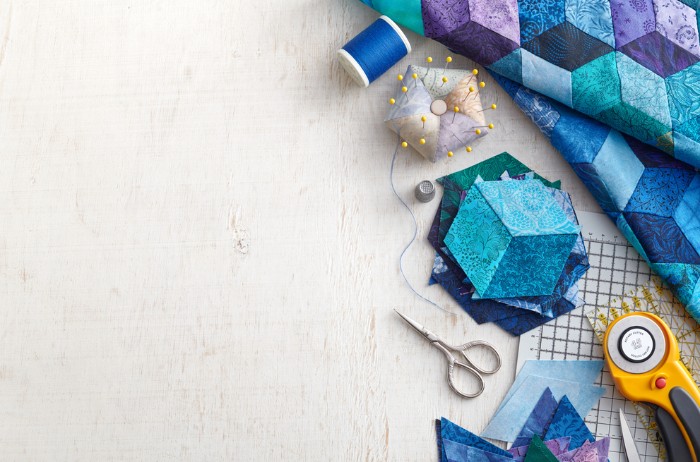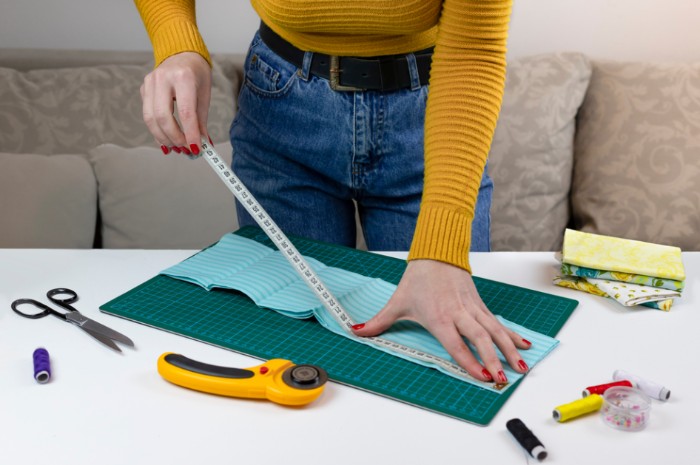
Subscribe To Emails
Subscribe to the YourCotton mailing list to receive updates on new arrivals and promotions (about once every 6 weeks)!

Quilting cotton is a fabric often used for quilts, but did you know that it can also be used for clothing? You should try quilting cotton for your next project for many reasons! In this article, we will discuss five reasons quilting cotton is an excellent choice for clothing. Keep reading to learn more!

Yes, quilting cotton is a great fabric choice for clothing. It is lightweight and comfortable, so it is perfect for the summer when you want to keep cool. Quilting cotton also comes in many different prints and colors, making it an excellent choice for all fashion projects.
Reason 1: Comfort and Breathability
Quilting cotton fabric is incredibly comfortable. It’s lightweight and breathable, so you won’t be too hot or too cold in it. It also has a soft feel to the touch, making it great for wearing out and about on a sunny day. Medium-weight cotton is also perfect for winter garments, as it provides insulation and keeps you warm.
Reason 2: Variety of Prints and Colors
Another great reason to choose quilting cotton for clothing is the wide variety of prints and colors available. From bright florals to subtle stripes, quilting cotton has something for everyone! You can find just the correct pattern for any outfit or occasion. Quilting cotton prints also look beautiful when mixed and matched with other fabrics.
Reason 3: Durability
Quilting cotton is surprisingly durable, especially when compared to other lightweight fabrics. It is less likely to stretch, shrink, or fade after multiple washes and wears. This makes quilting cotton an excellent choice for sewing clothing that needs to last!
Reason 4: Easy Care
Quilting cotton is easy to care for too. It can be machine-washed and even dried on low heat without difficulty. This means you can keep your garments looking their best with minimal effort. Sewing patterns designed for quilting cotton often have specific instructions on how best to care for the fabric.
Reason 5: Cost Effective
Finally, quilting cotton is very cost-effective compared to other types of fabric. It is usually much cheaper than linen or silk, which makes it a great choice if you’re on a budget.
So there you have it – five excellent reasons why you should try quilting cotton for your next fashion project! Whether you’re making a summer dress or warm winter coat, quilting cotton is sure to help make it look great. Now, pick out the perfect quilting fabric and get started!
Though quilting cotton is durable, sturdy, and perfect for crafting projects, it has some drawbacks to using it as a clothing fabric. It is generally not considered appropriate for tailored garments due to its stiffness, making the finished look boxy. Additionally, quilting cotton does not drape particularly well because of this stiffness and may stretch out of shape. Pocket bags and collars also require a heavier-weight fabric, so quilting cotton isn’t suitable for those applications.
Quilting cotton also wrinkles easily and does not necessarily hold up well over time as an article of clothing. Therefore, though it can be used in a limited fashion for specific garments or accents on clothing items such as appliqués or ruffles, it should not be seen as a suitable substitute for traditional apparel fabrics like linen or twill. Avoid quilting cotton if you are looking for a tailored silhouette or material that can withstand frequent wear and tear.
Caring for quilting cotton clothes is relatively easy. To keep them looking good and lasting as long as possible, follow these steps:
1. Wash in cold water with a gentle detergent. Quilting cotton can be machine-washed but should not be exposed to bleaches or fabric softeners. Sewing tips often recommend hand-washing or dry cleaning when possible.
2. Dry on low heat and promptly remove from the dryer so the fabric does not wrinkle or become damaged by excessive heat exposure.
3. Iron your clothes in a low heat setting if needed, taking care to avoid any direct contact between the iron and the fabric. Be sure to use a pressing cloth between the two surfaces to prevent damage to the material’s delicate weave.
4. Store your quilting cotton clothes in a cool, dry place from direct sunlight to prevent fading or damage to the fabric. If you must fold them, take care not to crease the fabric too much so that permanent wrinkles do not form.
Following these simple steps, you can keep your quilting cotton clothes looking new and beautiful for many years!
Here are some tips on how to sew with quilting cotton:
1. Before sewing, wash and press your fabric. This will help remove sizing agents that can affect the look of the finished product. If you’re concerned about shrinkage or color fading when washing quilting cotton, try pre-washing in cold water before beginning any project.

2. Use a universal needle size between 70/10 and 90/14 – this will allow you to sew through multiple layers of fabric. Also, use an all-purpose thread, not a quilting thread.
3. Use a walking foot attachment on your sewing machine to prevent slipping. This will also help keep your seam lines even when stitching through multiple layers of fabric.
4. Use pins or pattern weights rather than basting spray to secure the layers of fabric together before garment sewing – this allows for greater accuracy and prevents uneven edges along the finished item.
5. Quilting cotton is perfect for binding edges, providing a neat finish that won’t fray over time. When binding with quilting cotton, you should use bias tape or use continuous bias strips if you prefer a narrow binding edge that’s more flexible.
Overall, quilting cotton can be a great choice for making clothing, as it is durable and easy to work with. Sewing garments with quilting cotton is less expensive than other fabrics, and the end product will surely last for many years. However, some projects may have better choices; certain garment styles may require other extra fabric types. When choosing fabrics for clothing, think about the garment's purpose and desire to look before deciding which type of fabric to use. Additionally, it would help if you considered factors such as comfort and cost when selecting the suitable material for your project. With careful consideration and quality construction techniques, you can create beautiful clothing from any fabric, including quilting cotton!